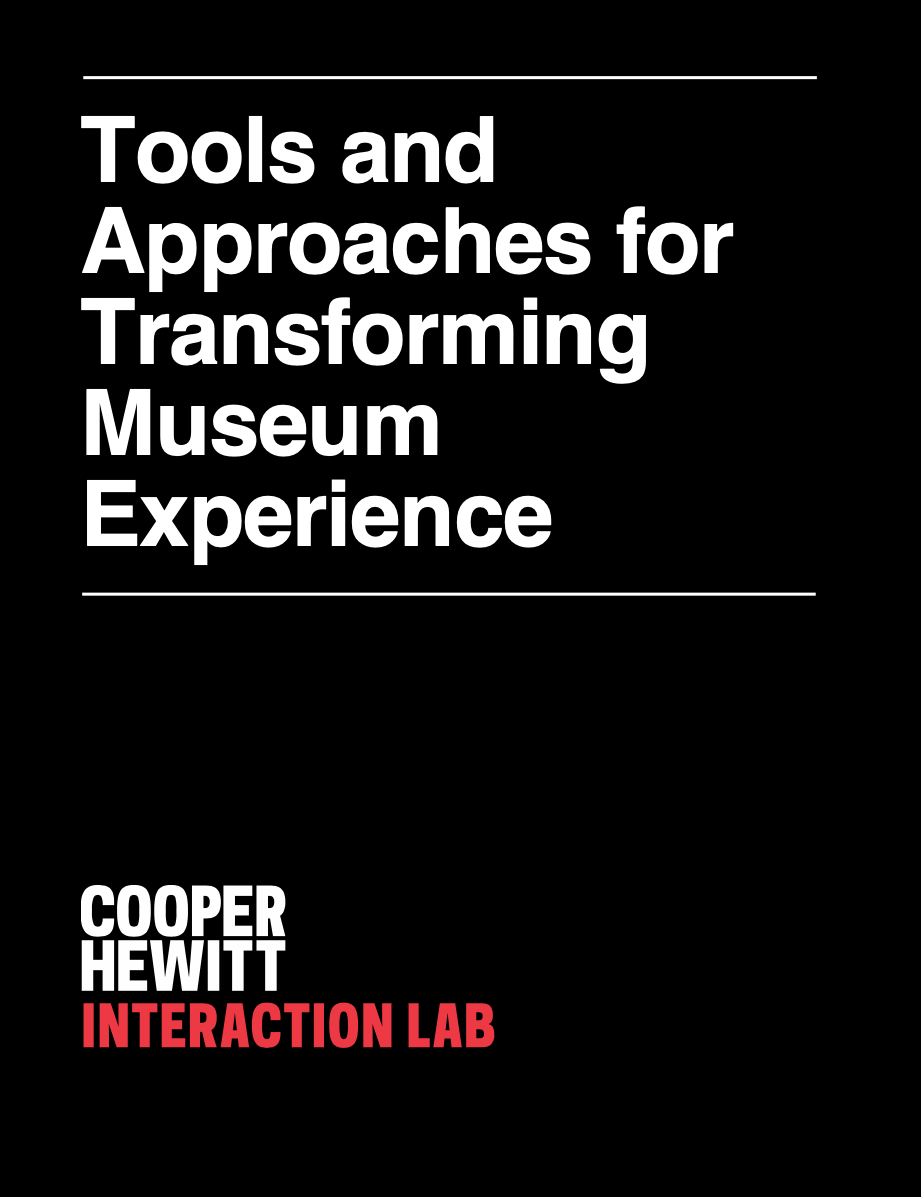
The practical, financial, and social impacts of the coronavirus alongside a national reckoning with racial injustice has increased the urgency to address why, how, and for whom museums exist in the 21st century. For museum professionals, this pivotal question raises another: how might we transform our collective approach to designing museum experiences to better reflect the diverse communities we serve? To explore this critically important conversation, Cooper Hewitt, Smithsonian Design Museum’s Interaction Lab convened a series of workshops inviting 15 museum professionals doing groundbreaking work across visitor experience-related roles, representing: curatorial, education, audience research, programming and public engagement, visitor services, exhibition design, digital, and accessibility.
Co-authored by the working group, the contents of this toolkit are drawn from discussions that emerged during all workshop sessions, some by design and some organically. It contains thoughts and ideas on why transforming museum experience is necessary, questions to help leaders and practitioners move toward designing transformative museum experiences, and tactics to help drive this work forward for audiences and communities, including useful tools and approaches from the co-authors’ areas of practice.
Tools and Approaches for Transforming Museum Experience is a product of the work of the Interaction Lab, an embedded research and development program driving the reimagining of Cooper Hewitt’s audience experience across digital, physical, and human interactions. Since its fall 2019 launch, the Lab has injected new ideas into the museum’s work through internal workshopping and strategy, a public program series merging interactive design and museum practice, and a commissioning program that engages the design community as creative collaborators in creating the next wave of the Cooper Hewitt experience. Driving all of the Lab’s work is an ethos of transparency, radical collaboration, empathy for internal and external audiences, and cross-disciplinary thinking.
This publication is made possible by support from the Samuel H. Kress Foundation.